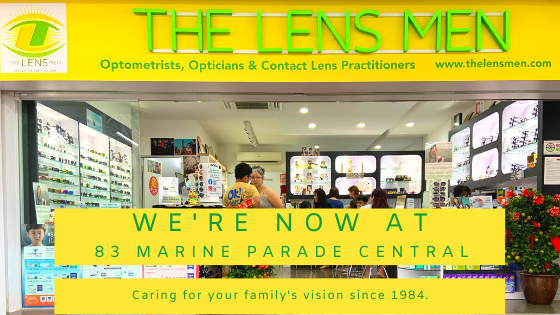Myopia Management by The Lens Men
Kids generally don’t know if they have bad eyesight. Fortunately, annual eye checks at school can reveal vision problems, and older children and teenagers may be observant enough to complain if they can’t see clearly. But with the younger ones (age 4 to 12), you’ll have to look out for clues such as squinting; excessive blinking and eye rubbing; headaches; reading books, watching TV and using digital screens at close proximity; and poor attention and behavioral problems in class because they can’t see the board clearly. These are all signs that kids may need vision correction and in Singapore, it’s typically because of myopia (short-sightedness).
Why control myopia NOW? Myopia is a lifetime disease lasting from age 7 to 70
Your child’s myopia prescription is one grade you never want them to jump ahead in. It’s extremely critical to prevent myopia or manage myopia right at onset — studies by the Singapore Eye Research Institute show:
Myopia progression is fastest when first developed at a young age
14.7% — a number predicted to rise — of Singaporeans have significant myopia by adulthood, and there’s a good chance your child can be one
Kids who develop significant myopia by adulthood are at higher risk of serious eye conditions later in life, such as myopic maculopathy, retinal detachment, posterior sub-capsular cataract and glaucoma
Each -1.00 increase = 60% increased risk of serious eye conditions later in life
Even LASIK cannot reverse the mutations to the eye caused by myopia. LASIK and regular single vision lenses can only correct vision so your child can see clearly, but these cannot control myopia progression or reduce the risk of serious eye conditions
When your child’s prescription reaches -6.00, it’s already too late — take action once it nears -2.00
Every degree saved from leaping up is one step away from preventing the above. Ask our professional and highly trained and experienced optometrists and opticians which myopia control solutions are best for your child:
(for tips on preventing the onset of myopia and encouraging healthy vision care habits with or without myopia, scroll down)
Hoya MiYOSMART
- now available with Sensity Fast photochromic!
Effective | Non-Invasive | Highly Impact Resistant and Durable | Thin and Light | UV Protection | Low Maintenance | Water Repellent | Anti-Reflective | Sensity Fast Technology Changes Lens From Clear to Dark In 30 Seconds
Essilor Stellest
Superb Clarity | Light and Durable | Easy Adaptation - Adult Supervision Not Needed | Breakthrough Device designation by the U.S. Food and Drug Administration | High Visual Comfort | UV Protection | Water and Grease Repellent | Anti-Reflective
Acuvue Abiliti
Designed to slow down myopia while correcting vision | Silicone hydrogel material for highest comfort, hygiene, wearability and handling quality | UV blocking | Works as quickly as within 6 months on average
How has the Covid-19 situation affected children?
With the dramatic increase of screen time since mid-2020, kids have been studying and doing their homework close up much more than ever. This strains their eyes, which are struggling to keep words and images in focus at near distance. Compounded with much more time on computer games and social media, eye strain is a constant factor in their daily lives, with very few breaks given for their eyes to relax.
They may also experience dry eyes since our blink rate decreases to 5 to 7 times per minutes when using electronic devices for a prolonged time, as opposed to 25 to 35 blinks per minute on the norm. Dirty masks may also cause eye irritations and inflammations.
This much screen time can permanently change the development of a child’s eye and quicken the progression of myopia. This sets kids up for a lifetime of glasses with higher prescriptions, which puts them at risk for vision complications like retinal detachment, glaucoma, lazy eye and even blindness.
Why limit near work and screen time for children?
Spending too much time doing close work can permanently change the development of a child’s eye, which changes their vision and leads to more nearsightedness, called myopia. This not only sets children up for a lifetime of glasses, but also puts them at risk for complications of nearsightedness, like retinal detachment, glaucoma, amblyopia (“lazy eye”), and even blindness. Give their eyes a well-deserved and much needed break!
Help your kids follow the 20-20-20 rule: gaze up from digital screens, books or homework every 20 minutes and look 20 feet (6 metres) away for 20 seconds. Better still, make sure they get at least 2 hours of outdoor time everyday, where they’ll always be looking into the distance (less visual effort required = less eye strain). Natural daylight has also been shown to trigger the release of retinal dopamines, which slows down the onset of myopia and its progress. This, and the soothing nature greens, will balance out near vision activities indoors and tiring blue light glowing from digital screens.



